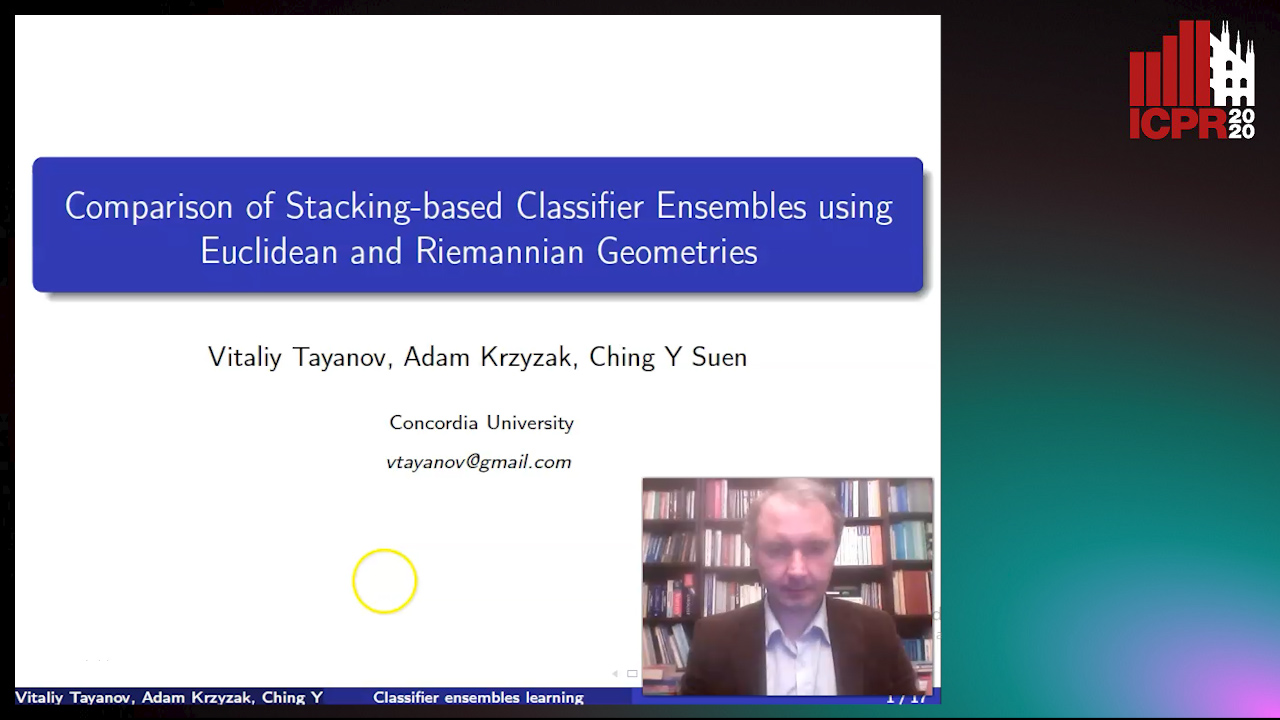Vitaliy Tayanov
Paper download is intended for registered attendees only, and is
subjected to the IEEE Copyright Policy. Any other use is strongly forbidden.
Papers from this author
Comparison of Stacking-Based Classifier Ensembles Using Euclidean and Riemannian Geometries
Vitaliy Tayanov, Adam Krzyzak, Ching Y Suen

Auto-TLDR; Classifier Stacking in Riemannian Geometries using Cascades of Random Forest and Extra Trees
Abstract Slides Poster Similar
This paper considers three different classifier stacking algorithms: simple stacking, cascades of classifier ensembles and nonlinear version of classifier stacking based on classifier interactions. Classifier interactions can be expressed using classifier prediction pairwise matrix (CPPM). As a meta-learner for the last algorithm Convolutional Neural Networks (CNNs) and two other classifier stacking algorithms (simple classifier stacking and cascades of classifier ensembles) have been applied. This allows applying classical stacking and cascade-based recursive stacking in the Euclidean and the Riemannian geometries. The cascades of random forests (RFs) and extra trees (ETs) are considered as a forest-based alternative to deep neural networks [1]. Our goal is to compare accuracies of the cascades of RFs and CNN-based stacking or deep multi-layer perceptrons (MLPs) for different classifications problems. We use gesture phase dataset from UCI repository [2] to compare and analyze cascades of RFs and extra trees (ETs) in both geometries and CNN-based version of classifier stacking. This data set was selected because generally motion is considered as a nonlinear process (patterns do no lie in Euclidean vector space) in computer vision applications. Thus we can assess how good are forest-based deep learning and the Riemannian manifolds (R-manifolds) when applied to nonlinear processes. Some more datasets from UCI repository were used to compare the aforementioned algorithms to some other well-known classifiers and their stacking-based versions in both geometries. Experimental results show that classifier stacking algorithms in Riemannian geometry (R-geometry) are less dependent on some properties of individual classifiers (e.g. depth of decision trees in RFs or ETs) in comparison to Euclidean geometry. More independent individual classifiers allow to obtain R-manifolds with better properties for classification. Generally, accuracy of classification using classifier stacking in R-geometry is higher than in Euclidean one.